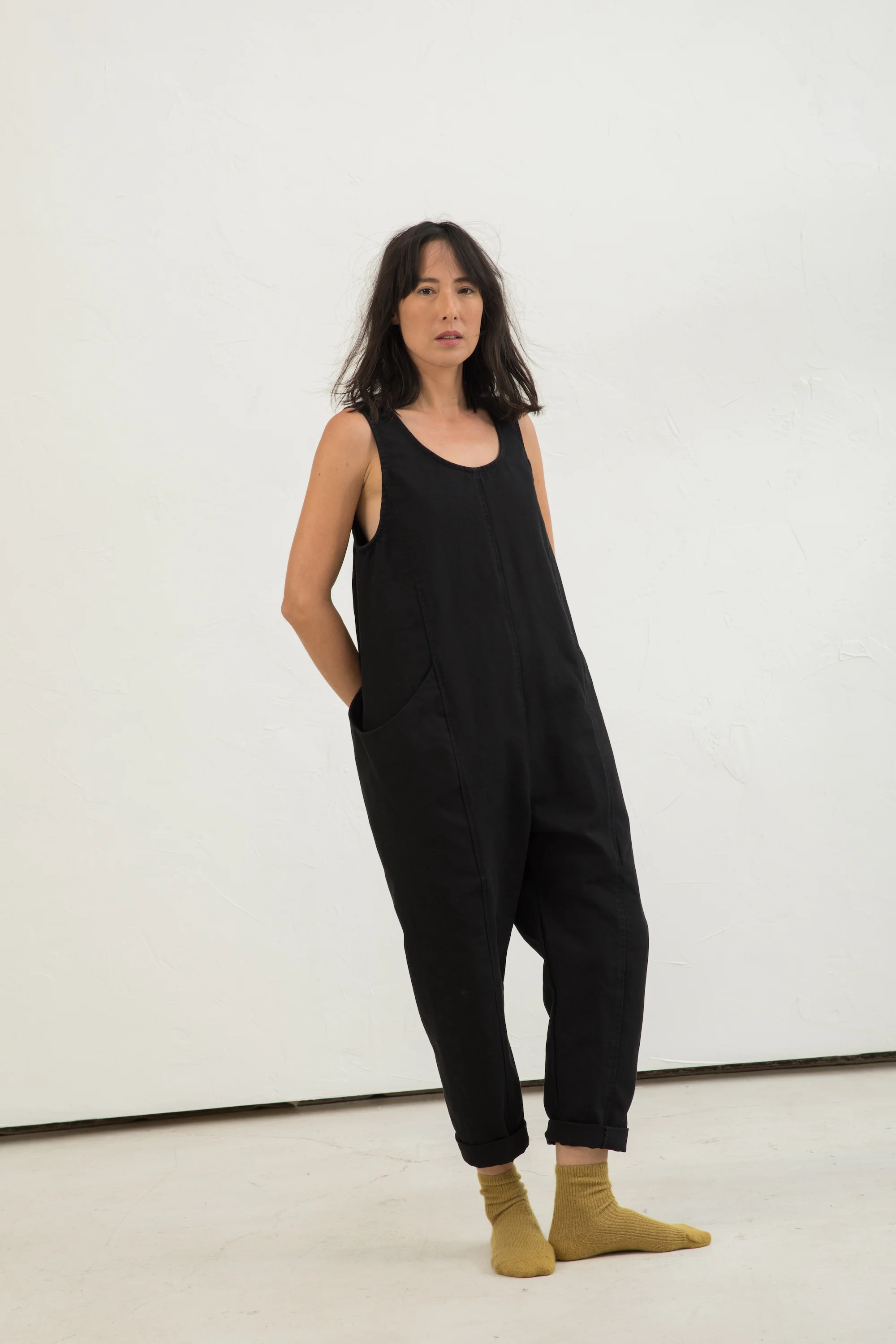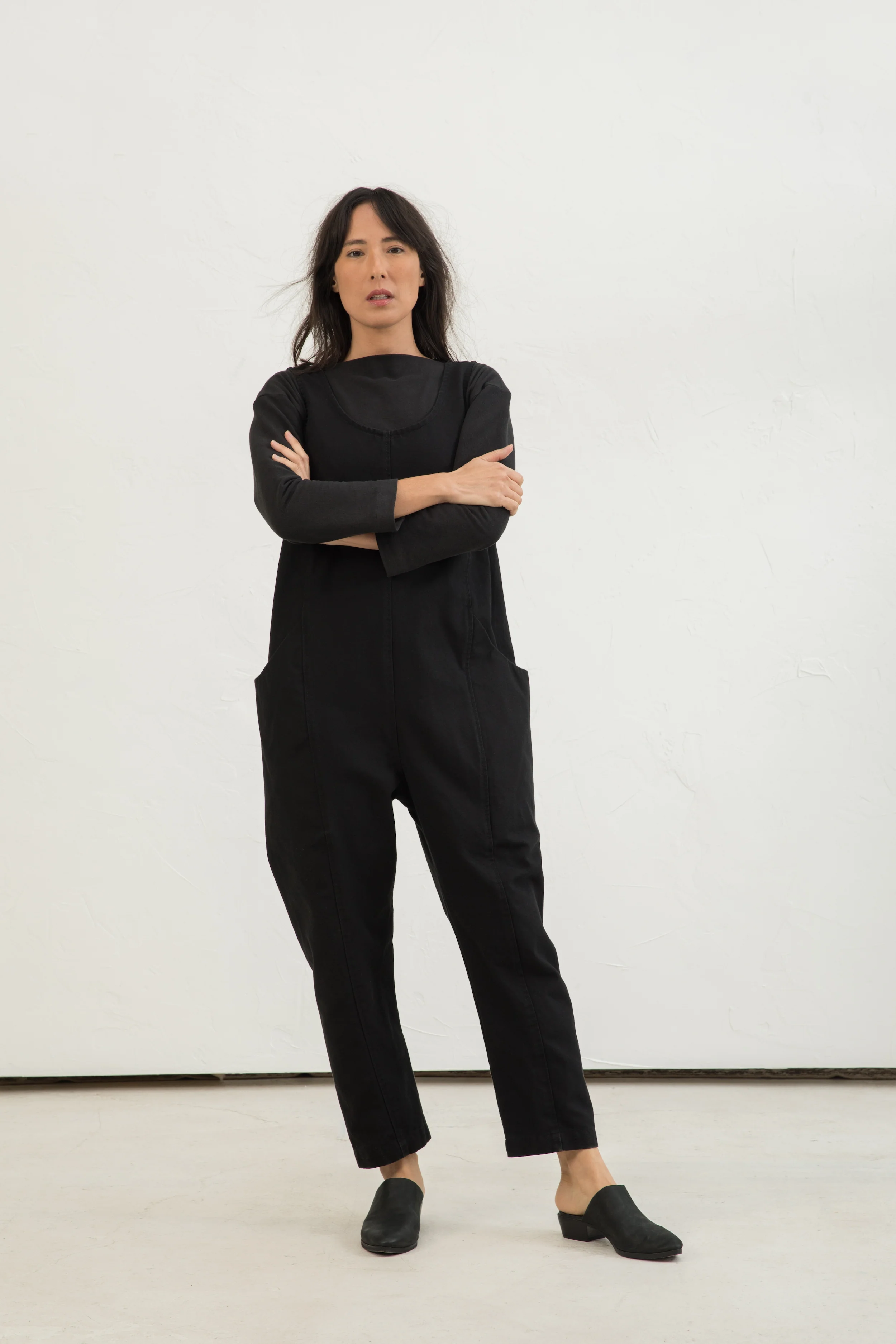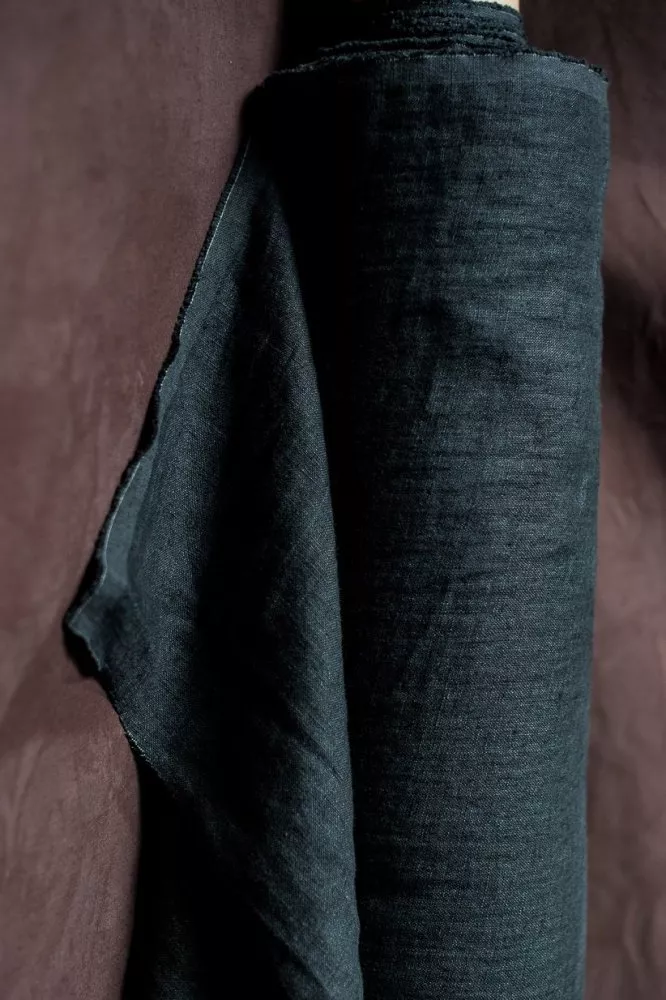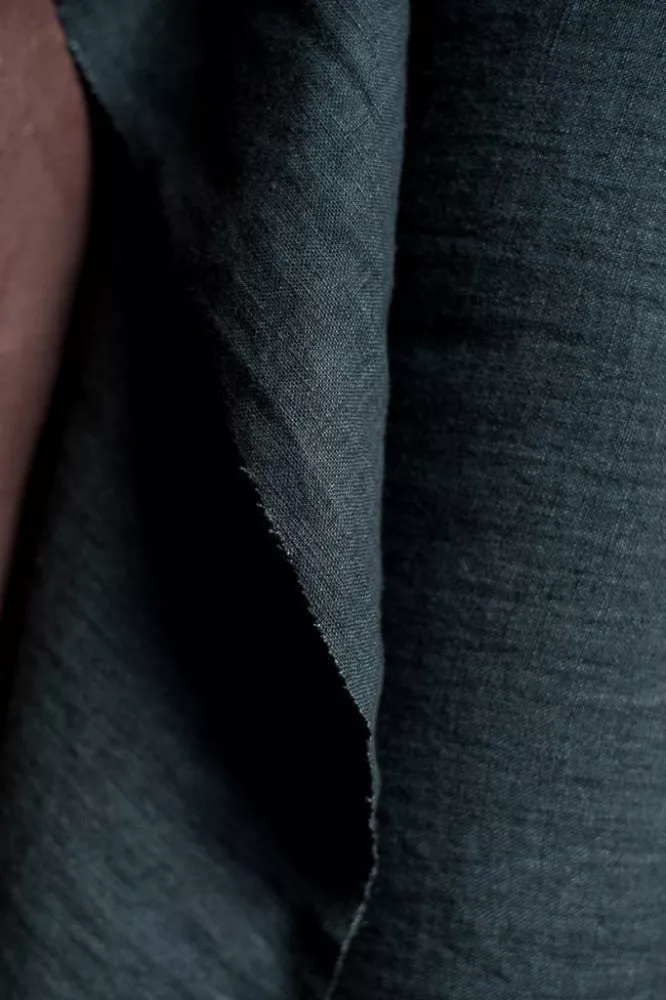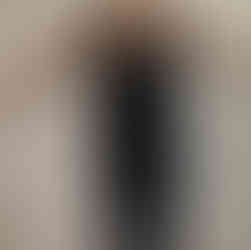Dare I say this is my favourite make to date?! Effortlessly minimal, laid-back, and incredibly comfortable.
If I had to sum up my style in one garment it would be the Elizabeth Suzann - Clyde Jumpsuit. I'm all about clothes that keep it simple yet have a touch of uniqueness. This jumpsuit features everything I love - a relaxed, cropped silhouette and, of course, spacious pockets. Have you seen how roomy these pockets are? Plus, I have a soft spot for jumpsuits.
The Clyde Jumpsuit really does strike the perfect balance between minimalism and uniqueness, comfort and functionality, making it an incredibly versatile wardrobe staple. I've made this jumpsuit twice now and there's no telling if I'll resist making another.
A wrap-up of this review
For the purpose of this post I am simply going to refer to the brand Elizabeth Suzann in shorthand as ES.
The maker: Elizabeth Suzann
Elizabeth Suzann (photographed below) founded her eponymous brand in 2013. The brand grew to a team of 42 as demand for her designs increased. In 2020, the company temporarily closed, citing factors such as the Covid-19 pandemic. However, Elizabeth Suzann's commitment and talent led to the reopening of the company, with operations shifting to her backyard workshop.
After scrolling through the ES website, it became obvious that sustainability is at the forefront of everything the brand does. I noticed a few key pillars that truly define what this beautiful brand stands for:
Longevity: ES creates well designed, beautiful, comfortable, and functional clothing that will be loved for years.
Natural fibres: ES is committed to working with natural and biodegradable fibres, which are dyed in beautiful calming colours. These fibres are not only kind to the environment but also to our bodies.
Local and independent: Elizabeth Suzann is involved in everything from designing, pattern making, sampling, and fitting, all of which takes place in her very own backyard workshop. She collaborates with partners in North Carolina for tasks like cutting, sewing, and packing, and the garments are then shipped from a family-owned distribution centre in the same region.
Inclusivity: Inclusiveness is evident in every aspect of the ES brand, from the photography, marketing, sizing, fit and styles.
Knowledge sharing: One distinctive feature of the ES brand is the provision of PDF sewing patterns for a variety of their designs. This strategy actively involves and educates consumers, providing a deeper insight into clothing production. It empowers individuals to make more informed choices while cultivating a heightened appreciation for the items in their wardrobes.
I strongly recommend checking out the beautiful garments, fabric, and of course sewing patterns on the ES website, and taking a look at their social media @elizsuzann, and hashtag #esmadebyme for some inspiration.
The pattern
ES patterns are available in digital format as PDF files. They can be easily purchased via the pattern page of the Elizabeth Suzann website.
Once you have purchased your pattern you will be emailed a link to download the PDF sewing pattern files. This download will provide you with access to:
A4 sewing instructions (33 pages).
A4 print at home patterns.
A0 copy shop patterns.
The digital download will include nested patterns* for all sizes in both the at home and copy shop pattern folders.
I usually opt to have the A0 pattern pages printed at a copy shop. This allows me to receive all available sizes in one print bundle. I can easily fold back (with a bit of clipping on the curves) the sizes I don't currently need. If I decide to make a different size in the future, it's conveniently ready to be unfolded. This, of course, depends on your individual preferences.
Design

The Clyde Jumpsuit pattern offers just one effortlessly minimal, yet unique version that features:
Large crescent-shaped pockets, capable of accommodating practically anything.
A three-panel design, adorned with topstitching, which not only introduces visual interest but also allows for effortless personalisation, ensuring a perfect fit.
Flattering medium-width shoulder straps.
Bias faced scooped neckline both at the front and back.
Bias faced armholes.
Double turned hem.
No closures - you simply jump straight in.
The instructions

The instruction booklets included with ES patterns are unsurpassed, being the most beautifully presented and detailed I am yet to come across.
The instruction booklet for the Clyde Jumpsuit spans 33 pages, covering everything you need and more to complete the project. The instructions are detailed where they need to be, written in easy to understand language, thoughtfully organised with clear sub-headings, and each step is accompanied by a clear diagram.
What I loved the most about the booklet was the “Quick start guide”. If you are a more confident sewer, this simplified guide included at the beginning of the booklet features just those key steps, allowing you to jump straight in.
I don't normally print the pattern instructions, purely to save paper, as I find a digital copy works just fine. However, I am very tempted to print this one and keep it as a book. It is just beautiful!
Sizing
The Clyde Jumpsuit is available in sizes XXS-4XL, and includes three length options - short, regular and tall.
When it comes to measuring and selecting your size, the instruction booklet includes pages of detailed and user-friendly diagrams and tables. If you are after a little more guidance, the ES website provides a valuable and in-depth guide (and video) on how to measure that it well worth a look.
Fabric and notions
The Clyde Jumpsuit is recommended for medium weight fabrics, with no stretch. Think linen, cotton, and hemp. It is also fine to deviate from this recommendation with the use of a lighter weight fabric that will simply add more drape, and heavier weight fabrics that will create a more structured garment.
To complete the jumpsuit you will simply need matching thread.
I have made this jumpsuit twice now, creating a summer and winter weight version.
Version 1:
Surprise, surprise, I went with another Merchant & Mills fabric, choosing their 100% GOTS, and Oeko-Tex certified European laundered linen in Sweeps Scrim (a Jet Black). Don't be fooled by the photographs on their website (like I was). I had been overlooking this fabric for weeks because I thought it was a dark petrol colour (see images below). It really is a true Black.
This fabric forms part of their 185 linen stock range. If you have been following me, you know this is my go to fabric. I wear linen all year round, even here in Munich. I simply layer my linen garments with my thermals underneath. I also love the lived in look of linen and that you can get away with the crumpled, "lived in", casual look. This 185 linen has a lovely hand feel, washes beautifully, and is a dream to cut and sew. I knew it would perform well for a summer weight jumpsuit. There is a reason I keep coming back to it!
Version 2:
For my second version, I wanted something more suitable for winter. Therefore, I opted for an 8 wale, 100% Cotton Corduroy in black that I purchased from a local fabric store here in Munich.
As corduroy is a heavier weight fabric, I chose to use a 100% cotton voile in black for the pocket facings to minimise the bulk. This choice proved effective, and no one would ever know as the facings aren't visible from the outside of the garment.
Layout and cutting
As always, I would recommend pre-washing your fabric as per the care instructions prior to starting any cutting or sewing. For more on pre-washing your fabric, check out my article 'How to: Pre-wash your fabric'.
The Clyde Jumpsuit pattern consists of 14 pattern pieces in total:
Front panel x 2
Back panel x 2
Side panel x 2
Pocket bag x 2
Pocket facing x 2
Armhole bias binding x 2
Neckline bias binding x 2
The layout and cutting is fairly straightforward, fitting quite nicely within 150cm wide fabric. This pattern will also work with narrower width fabrics, with the instructions providing a variety of cutting layouts for 110-150cm wide fabrics.
Note: As I was working with corduroy fabric that has a nap** for my second version, I had to ensure all my pattern pieces were running in the same direction. Therefore, I did purchase additional fabric to accomodate this.
If you are interested, I cut my first ES Clyde Jumpsuit and the ES Harper Tunic at the same time. By cutting both patterns from the same fabric piece, I saved a significant amount of fabric. I was able to strategically manoeuvre and arrange the pattern pieces like a jigsaw puzzle. Given my inclination toward the same colour and fabric, I plan to adopt this approach again in the future.
Note: I am currently working on a ‘How to’ for more accurately gauging the amount of fabric to buy for a pattern, as if you are like me, you tend to find yourself with an annoying strip of fabric left over that just gets added to your stash. These tips will require you to have the pattern first. Stay tuned!
Fabric preparation
Once your fabric is cut out and ready to go, there is only a little prep work that I would recommend prior to commencing sewing of this jumpsuit that may just make the sewing process that little bit easier:
Ensure you have transferred all pattern markings and notches onto your fabric. In particular, ensure you have marked the positioning of the pockets, and the centre front and back on both the garment and binds. I would also recommend adding some notches to the panels as these pattern pieces are quite long and it may just help ensure correct alignment.
Reinforce the front and back necklines and armholes. This isn't stipulated in the instructions, however I would recommend stay-stitching*** around the neckline and armholes simply to avoid any distortion.
Prepare bindings: I much prefer to have my bindings pressed and ready to go so I always make these up ahead of time.
Sewing
This pattern is described as being of intermediate difficulty, suitable for patient beginners, and I would agree. The pattern comes together fairly quickly within a few hours, having you:
Straight stitching and edge finishing seams.
Under-stitching.
Top-stitching.
Creating and attaching bias facings.
Sewing double turned hems.
Changes I made while sewing:
After attaching the facing, I decided against clipping into the curves along the top edge of the pockets. This choice was based on personal preference, as I believe this method can create weak points in the seam and may not always sit nicely.
For the neck and armhole bindings, I opted to make them slightly longer than specified in the instructions as I had some trouble making the bind sit flat around the more "dramatic" curves.
For the corduroy version, I refrained from topstitching the panels due to the pile of the fabric.
The fit
I made the XXS - Short for version 1. I am more on the shorter side, coming in at approximately 155cm, and the jumpsuit finishes above my ankle - a nice cropped length.
The front neckline sits really nicely, allowing for this jumpsuit to be worn on its own (see photographs below).
The iconic deep pockets do sit slightly away from your body.
I sized up for version 2 to an XS to allow for the wearing of thicker layers underneath.
I also added length to the hem to help keep my ankles warm in those cooler months.
If (or when) I make this again, I will probably experiment with adding length to the torso, as it did pull slightly through the middle and crotch when bending over and sitting.
Personal reflection
What I loved: I love a jumpsuit, and I particularly love this one. As mentioned previously, the design of the Clyde Jumpsuit fits my style to a tee.
One minor issue I encountered: My only slight niggle (in likeness to the Harper Tunic) is related to the bias neck facing. I found it a little difficult to make the bias facing sit nicely especially at the more “dramatic” curve of the centre front using the measurements provided. It's possible that my fabric was a factor. To resolve the issue, I simply ended up making my binding just that little bit longer.
Any changes: Nope! I just love this pattern.
Glossary
Nested patterns*: Refers to patterns that feature multiple sizes layered (or nested) within each other. You may see the different sizes colour coded, or more commonly indicated with different patterned lines (e.g. dashed). These differentiated lines make it easy to identify, and therefore cut or trace the desired size. When working with a PDF pattern, there will often be an option to select the size you would like printed, turning off (or making invisible) any unnecessary layers.
Nap**: Refers to the texture or direction of the fibres, creating a raised or fuzzy surface when manipulated in a certain direction. This can be directional, meaning it runs in one direction and changes the appearance of the fabric when viewed or touched from a different angle. An example of this is velvet, where running your hand back and forth over the fabric changes its appearance and feel. Or non-directional, where the nap runs in multiple directions without affecting the fabric's appearance.
Stay-stitching***: Serves the purpose of stopping the edges of the fabric stretching out of shape as you construct your garment. To stay-stitch, simply use a regular stitch length (I use 2.5mm) and sew 6mm from the edge, back-tacking at the start and end of your stitching to secure the threads.
Please get in touch or leave me a comment. I would love to know if you found this pattern review helpful, or if there is something you would like me to include in these reviews in the future. Hopefully, I have also inspired you to check out the Clyde Jumpsuit pattern, and the beautiful brand that is Elizabeth Suzann.
Thanks for reading.
Emma xx
This is a personal blog. Any views or opinions contained on this site are my own. I am not affiliated with any brands, products, or organisations mentioned, and do not receive any sponsorship, payment, or other compensation for any of the content on this site.


